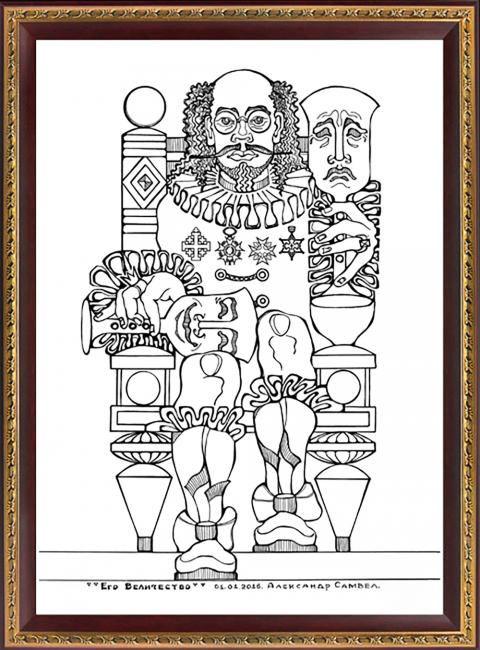A king must remember three things:
That he rules people,
That he has to rule them with accordance to laws,
That he will not rule forever.
Euripides
“His majesty” one may call oneself in their mind’s eye if they are trying to perceive what power is and to approach it. This image is created for leaders and clear-cut passionaries.
Sitting on the throne, “His majesty” is the embodiment of any wise ruler.
His shrewd and clever look sees the essence of the problems arising before him. He clearly realizes the time he lives in. For the sake of a dialogue he is holding two goblets in the shape of masks of sorrow and joy, which at the same time symbolize grief and triumph, without which it is impossible to ascend the throne.
The throne he is sitting in is narrow. It is a symbol of plots, fight for power, laws that press and oust him, betrayal of close people, temptations that will make him lose the throne if he falls for them.
The four orders on the ruler’s chest are connected with particular historic events, being a collective image.
- Jerusalem cross – the cross of the Holy Sepulchre. Jerusalem cross was worn as stripes by crusaders, and after them there began a tradition of award orders in Europe.
- Legion of Honour – a French national order established by Napoleon Bonaparte by the example of the Chivalric orders. The order is the supreme decoration, a sign of high respect and official recognition of outstanding service in France.
- Order of the Holy Spirit - the supreme award of the kingdom of France during the period of the Old regime. The order declared its aim to be the protection of the Catholic belief and the august personage of the king. Their motto was “Leading and Patronizing”.
- Order of Solomon – presents a combination of the star of David and a cross.
